A properly functioning water flow system is essential for any refrigerator, and Whirlpool refrigerators are no exception. If you’ve been experiencing slow or inadequate water flow in your Whirlpool refrigerator, fear not! In this comprehensive guide, we will explore proven techniques and tips to help you increase water flow and optimize the performance of your refrigerator.
By implementing these strategies, you’ll not only quench your thirst with refreshing chilled water but also enjoy the convenience of ice cubes on demand.
So let’s dive in and unlock the secrets to maximizing water flow in your Whirlpool refrigerator.
“A properly functioning water flow system in your refrigerator is the key to quenching your thirst and keeping things cool. Don’t underestimate the importance of maximizing water flow—it’s the secret to a well-rounded refrigerator experience.”
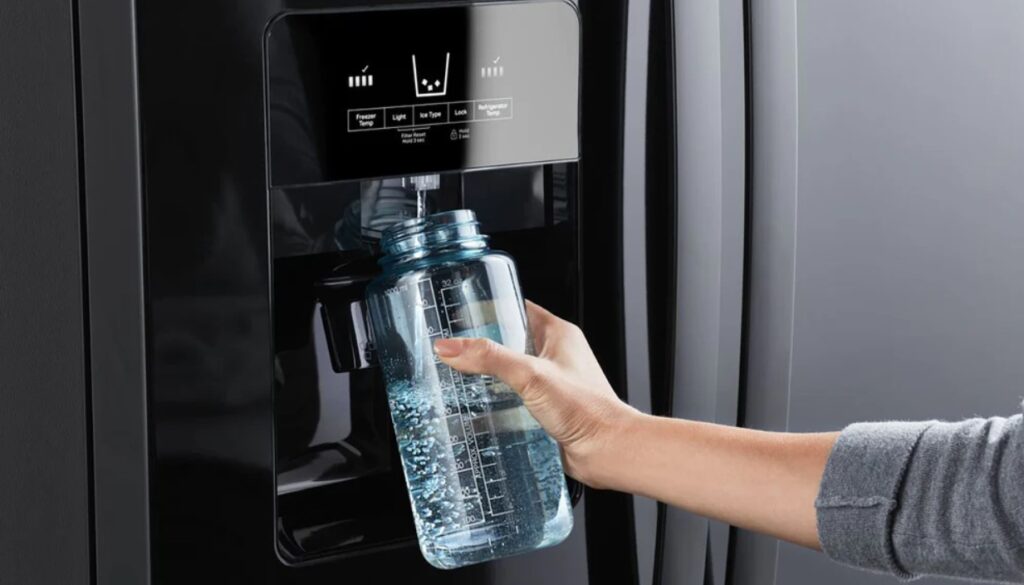
Why is my whirlpool refrigerator water dispenser so slow?
The slow water dispenser in your Whirlpool refrigerator could be due to several reasons. First, check the water supply line to ensure it’s not kinked or obstructed. Additionally, inspect the water filter; if it’s clogged, it can impede water flow.
Verify that the water pressure to the fridge is adequate. If the issue persists, there might be a problem with the dispenser valve or the dispenser itself.
What Are The Issues That Can Affect Water Flow In Whirlpool Refrigerators?
There are several issues that can affect water flow in Whirlpool refrigerators, which can lead to inadequate ice production or dispensing issues. These issues include –
- Clogged filter: A clogged filter can restrict water flow and cause a decrease in water pressure.
- Frozen water line: A frozen water line can prevent water from flowing to the dispenser or ice maker.
- Faulty water inlet valve: A faulty water inlet valve can prevent water from entering the refrigerator, resulting in no water flow.
- Malfunctioning dispenser switch: A malfunctioning dispenser switch can prevent water from being dispensed.
- Low water pressure: Low water pressure can cause a slow flow of water and affect the effectiveness of the dispenser or ice maker.
It is important to address these issues promptly to ensure proper water flow in Whirlpool refrigerators.
How Can You Diagnose The Water Flow Problems In Whirlpool Refrigerators?
There are a number of potential issues that could be causing water flow problems in Whirlpool refrigerators. To diagnose water flow problems in Whirlpool refrigerators, start by checking the water supply. Ensure that the water valve is fully open and the water pressure is adequate.
If the water supply is not the issue, examine the water inlet valve and the water filter for any clogs or damage. If both components appear to be functioning properly, inspect the water tubing for any leaks or blockages.
If the tubing is clear, inspect the ice maker for any damage or obstructions that may be blocking water flow.
Finally, if none of these steps resolve the issue, it may be necessary to call in a professional technician to diagnose and repair the problem.
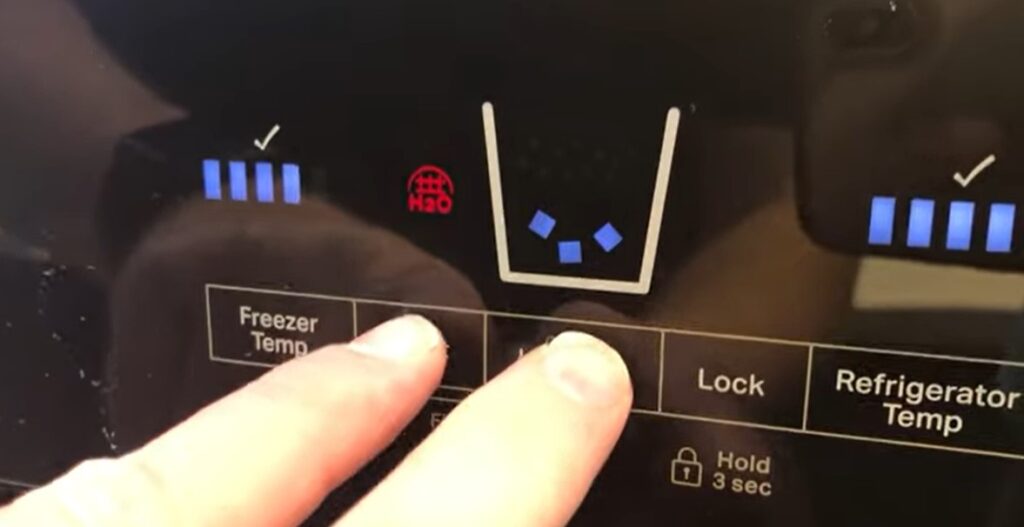
How To Increase Water Flow In Whirlpool Refrigerator? Steps To Follow
To increase water flow in a Whirlpool refrigerator, first, make sure the filter is clean and replace it if needed. Secondly, check all connections to ensure they are secure. If the tubing connected to the back of the fridge has become kinked or twisted, straighten it out with a pair of pliers and reconnect it securely.
If you find all the components ok but your Whirlpool refrigerator dispensing water slowly, then you can follow the steps below:
1. Check for Obstructions:
Before attempting any other steps, check the water line for obstructions such as kinks in the hose or a clog in the filter
If there are any blockages, clear them out and then check to see if the flow has increased
2. Clean Out Casing Around the Water Line:
Remove the casing around your refrigerator’s water line and use a brush to scrub away dirt and debris that could be blocking water flow
This should increase pressure on the connection between your refrigerator and its supply line, allowing more efficient transfer of liquid through it
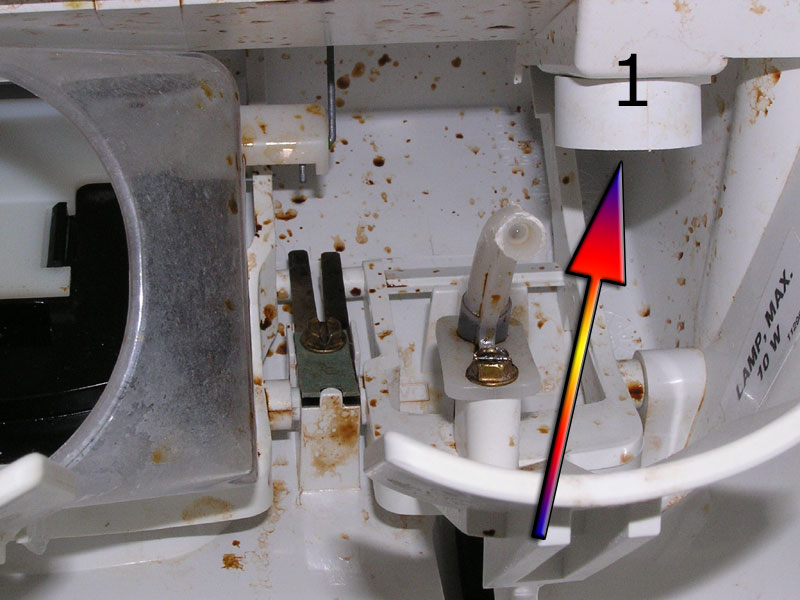
3. Replace Filter Cartridge:
If you have an inline filter installed on your refrigerator’s water supply line, replace it with a new one every six months or so to ensure maximum efficiency of liquid flow; this will also help reduce sediment buildup that can clog up lines over time
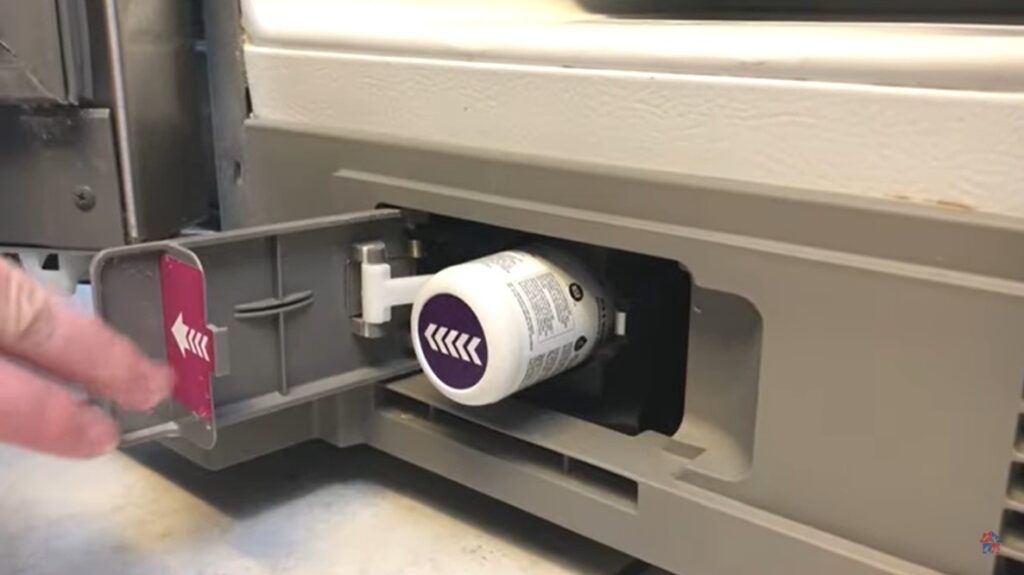
4. Swap Out the Supply Line Hose:
An old supply hose may be damaged from years of wear and tear; replacing this part with a new one should restore proper pressure levels along your fridge’s entire water system quickly and easily!
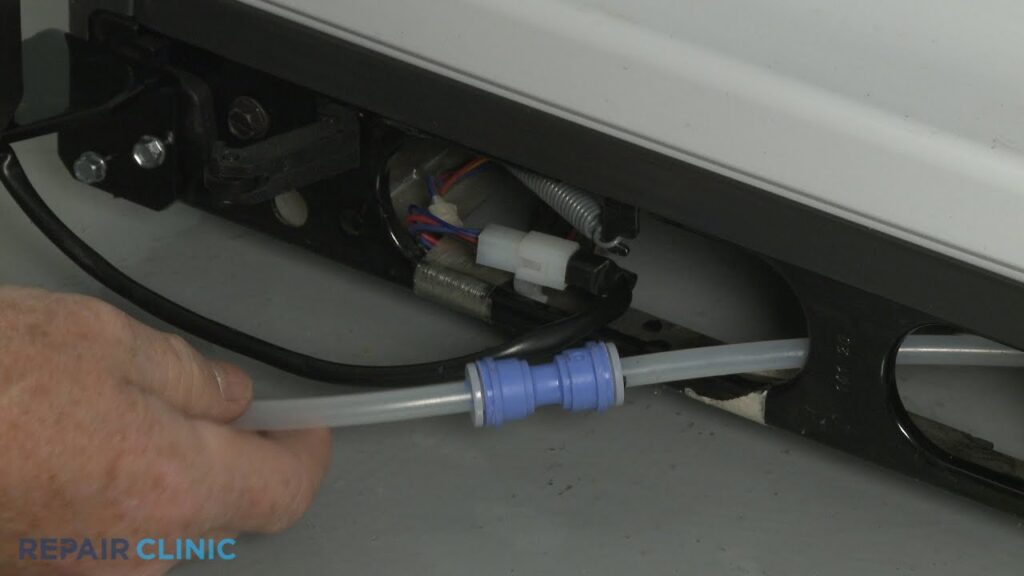
5. Inspect Inlet Valve Assembly:
The inlet valve assembly is responsible for controlling how much cold air gets into your fridge’s cooling chamber; if it isn’t working properly, then this could lead to decreased performance from both systems (air conditioning & refrigeration).
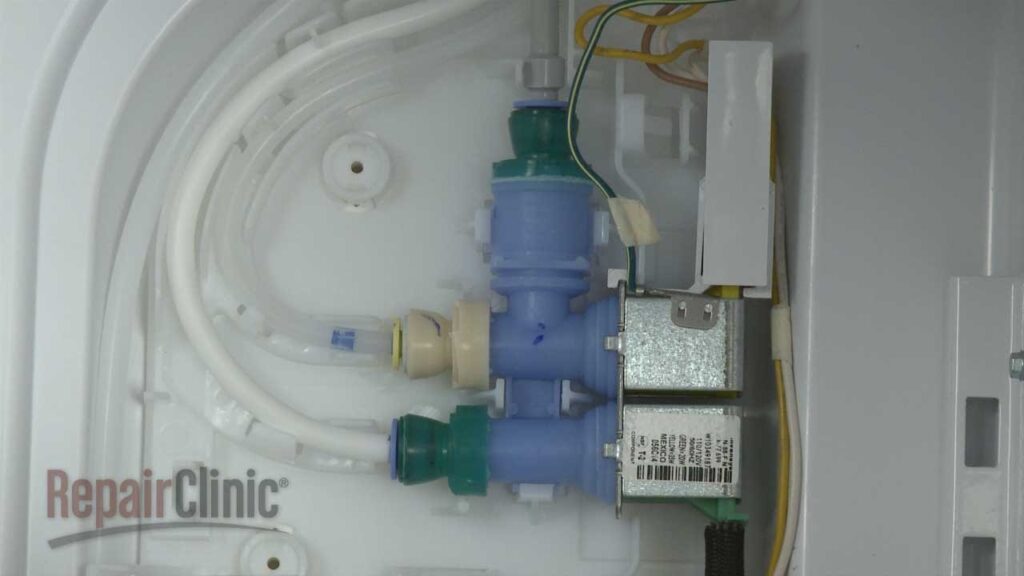
A quick inspection by an experienced technician should reveal any problems here that need attention – if all looks good though, try adjusting valves slightly before calling someone else out!
These steps should help improve your refrigerator’s water flow rate significantly!
Some Proven Techniques To Increase Water Flow:
Get ready to supercharge your water flow in your Whirlpool fridge! Not only can you follow the steps above, but we’ve got some extra techniques and tips to take your water game to the next level. Say goodbye to inconsistent output and hello to a constant flow of refreshing water!
A. Regular Maintenance and Cleaning:
Cleaning the Water Filter: Regularly cleaning the water filter is crucial for maintaining optimal water flow in your Whirlpool refrigerator. Follow these steps:
- Locate the water filter, typically located in the upper-right corner of the refrigerator compartment.
- Turn off the water supply to the refrigerator.
- Remove the water filter according to the manufacturer’s instructions.
- Rinse the filter under cold water to remove any debris or sediment.
- If the filter is heavily soiled, consider using a mild detergent and a soft brush for thorough cleaning.
- Once cleaned, reinstall the filter and turn on the water supply.
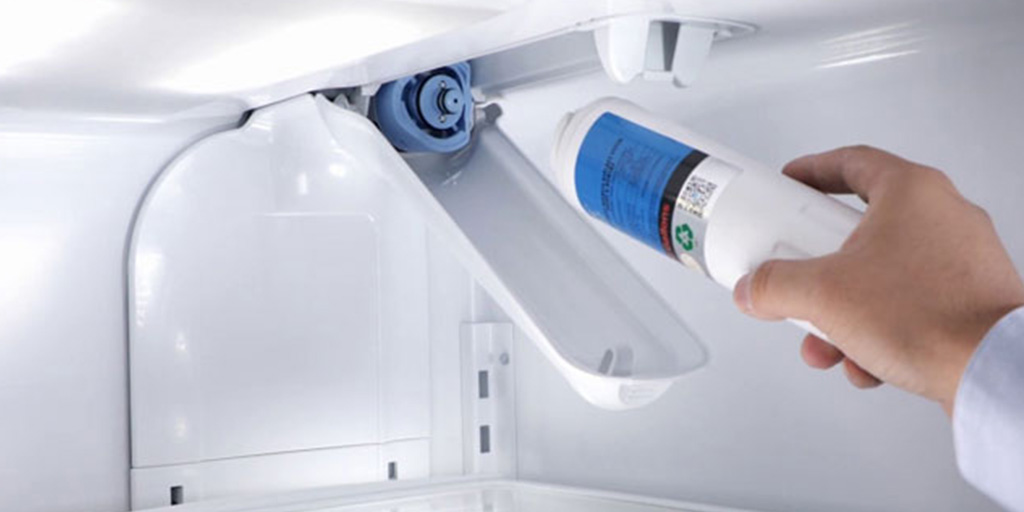
Defrosting Frozen Water Lines: Frozen water lines can restrict water flow in your refrigerator. To defrost them, follow these steps:
- Unplug the refrigerator or turn off the water supply.
- Locate the water supply line, usually at the back of the refrigerator.
- Use a hairdryer or apply warm towels to the frozen section of the water line until the ice melts.
- Once the water line is thawed, turn on the refrigerator and check if the water flow has improved.
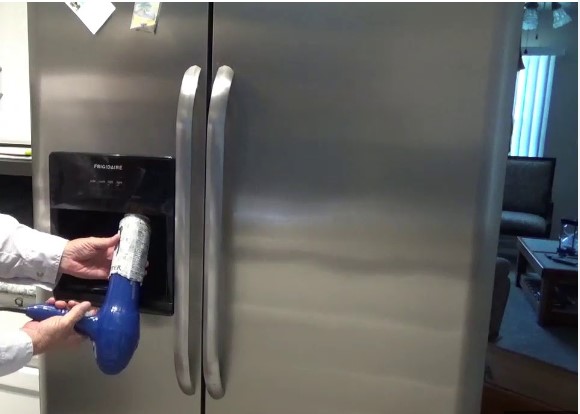
Removing Mineral Deposits: Mineral deposits can accumulate over time, affecting water flow. To remove them, consider the following:
- Prepare a mixture of equal parts water and vinegar.
- Dip a clean cloth or sponge into the mixture and wipe down the dispenser area, including the water spout.
- For stubborn mineral deposits, soak a cloth in the mixture, wrap it around the water spout, and let it sit for a few hours.
- Rinse the dispenser thoroughly with clean water to remove any residue.
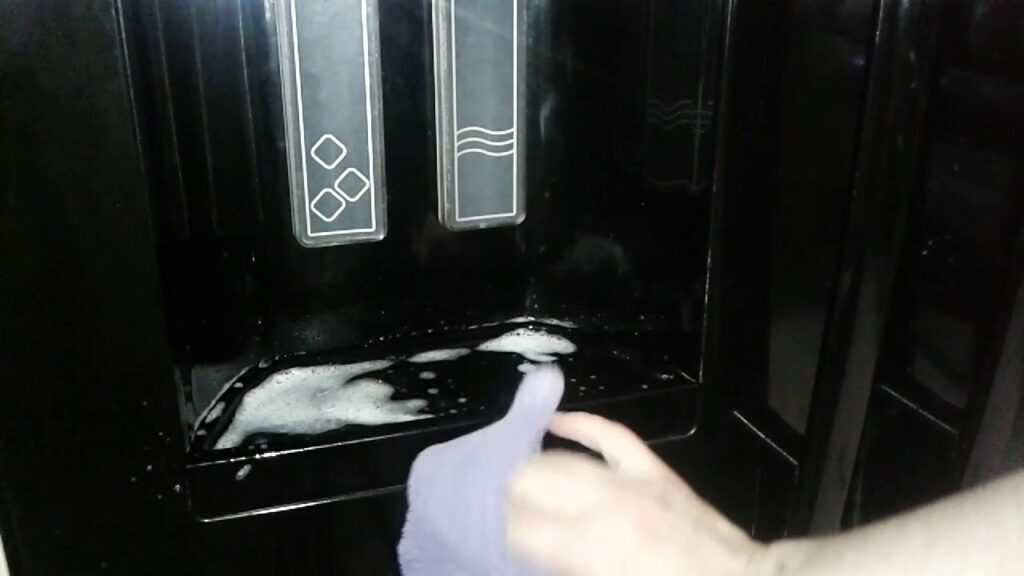
B. Optimizing Refrigerator Settings:
Adjusting Temperature Settings: The temperature settings of your refrigerator can impact water flow. Follow these guidelines:
- Set the refrigerator temperature between 35°F and 38°F (1.7°C and 3.3°C).
- Ensure the freezer temperature is set between 0°F and 5°F (-17.8°C and -15°C).
- Extreme temperatures can cause water line issues, so avoid setting the temperatures too low or too high.
Ensuring Proper Door Seal: A faulty door seal can lead to warm air entering the refrigerator, affecting water flow. Take the following steps:
- Inspect the door seal for any signs of damage, cracks, or wear.
- Clean the door seal using mild soapy water and a soft cloth to remove dirt and debris.
- Ensure the seal makes complete contact with the refrigerator body when the door is closed.
- If the seal is damaged or not sealing properly, consider replacing it with a new one.
C. Upgrading the Water Filter:
Choosing the Right Filter Type: Selecting the appropriate water filter for your refrigerator is vital. Consider the following factors:
- Check the model number of your Whirlpool refrigerator and consult the manufacturer’s guidelines to identify the compatible filter.
- Consider additional features like filtration capacity, contaminant removal capabilities, and filter lifespan.
- Opt for filters that are certified by reputable organizations such as NSF (National Sanitation Foundation).
Replacing the Filter Regularly: Regularly replacing the water filter is essential for maintaining optimal water flow. Here’s what you should do:
- Follow the manufacturer’s recommended filter replacement schedule, typically every six months.
- Some refrigerator models have built-in filter replacement indicators; pay attention to those alerts.
- Before replacing the filter, turn off the water supply and follow the manufacturer’s instructions for removal and installation.
By implementing these proven techniques and tips for increasing water flow in your Whirlpool refrigerator, you can ensure a steady and refreshing supply of water and ice, enhancing your overall refrigerator experience.
Remember to perform regular maintenance, optimize the refrigerator settings, and upgrade the water filter when necessary to enjoy the best performance from your appliance.
How to increase water flow from Fridge Water Dispenser?
How do i fix low water pressure in my refrigerator?
If you’re facing low water pressure in your refrigerator, follow these steps to troubleshoot the issue:
- Check Water Supply Valve: Ensure that the water supply valve connected to the refrigerator is fully open. A partially closed valve can restrict water flow.
- Inspect Water Line: Examine the water line for any kinks, twists, or obstructions. Straighten out the line and ensure it’s not pinched.
- Replace Water Filter: If your refrigerator has a water filter, a clogged filter can reduce water pressure. Replace it according to the manufacturer’s recommendations.
- Verify Water Pressure: Confirm that the water pressure from the main water supply is sufficient. Low household water pressure can affect the refrigerator’s water dispenser.
- Check for Frozen Water Line: In some cases, the water line inside the freezer compartment may freeze, causing low pressure. Thaw the line by turning off the refrigerator and allowing it to defrost.
- Inspect Inlet Valve: The inlet valve, responsible for regulating water flow, might be faulty. Check for any signs of damage or malfunction and consider replacing it if necessary.
- Consult User Manual: Refer to your refrigerator’s user manual for specific troubleshooting steps and guidelines tailored to your model.
By addressing these factors, you should be able to improve water pressure in your refrigerator.
How to Flush Water System on Whirlpool Refrigerator?
If your Whirlpool refrigerator is producing water that tastes or smells bad, it may be time to flush the water system. To do this, you need to locate and remove the filter from inside the refrigerator, then turn off both cold and hot water supply lines. Next, attach a garden hose to the inlet of the filter housing and direct it outdoors or into a bucket.
Open up both valves on either side of the filter housing and let them run for five minutes before turning them off again. Finally, reinstall your filter and turn on both supply lines again—your water system should now be flushed!
Whirlpool Refrigerator Water Pressure Regulator
The Whirlpool Refrigerator Water Pressure Regulator is an essential component in ensuring that your refrigerator has the proper water pressure. It helps to adjust and maintain a consistent flow of water, so you can enjoy cool, refreshing water without any interruption or disruption.
By regulating the amount of pressure needed for optimum performance, this device also helps to extend the life of other components within your refrigerator unit.
Whirlpool Refrigerator Water Dispenser Only Works Without Filter
Whirlpool refrigerators with a water dispenser are designed to work without a filter, but the quality of the water may not be as good.
The refrigerator has been designed to provide clean and safe drinking water without needing a filter, but if you want the best-tasting and highest-quality water, it is recommended that you install an inline or external filtration system.
How Do You Fix a Slow Water Dispenser on a Refrigerator?
If you find that your refrigerator’s water dispenser is running slow, there are a few steps you can take to try and fix the issue. First, check if the water line connected to your refrigerator is kinked or bent; this could be restricting the flow of water. If that isn’t the problem, make sure no ice has built up inside the dispenser tube.
You may also need to replace any worn or defective parts in order to restore proper functioning. Additionally, if none of these solutions work, consider calling a professional service technician for help with repairs.
Fridge Water Dispenser Slow Whirlpool
If you own a Whirlpool fridge with a water dispenser, you may have noticed that it is not dispensing water as quickly as it used to. This could be caused by a clogged filter or low water pressure. To fix this issue, try replacing the filter and ensuring your home’s water supply has adequate pressure before calling for repairs.
Additionally, if your model of Whirlpool refrigerator has an ice-maker connected to the same line as the water dispenser, check to make sure there are no blockages in the line leading from the ice-maker to improve flow from both components.
Whirlpool Refrigerator Water Dispenser Slow After Filter Change
If you’ve noticed that your Whirlpool refrigerator’s water dispenser has become slow after a filter change, don’t worry! This is normal and will likely resolve itself as the water pressure in the line adjusts to accommodate the new filter.
If this doesn’t happen within a few days, it may be helpful to check for any kinks or obstructions in the tubing. If all else fails, consider contacting customer service for further assistance.
Samsung Refrigerator Water Dispenser Slow After Filter Change
If you’ve noticed that the water dispenser on your Samsung refrigerator is running slower than normal after replacing the filter, it could be due to a clog. Make sure all parts of the filter housing and tubing are firmly connected, then run a few cups of water through the system to flush out any sediment or built-up deposits.
If this doesn’t help improve performance, check for kinks in the tubing or an obstruction like a crushed ice cube blocking the flow. If none of these solutions solve your problem, contact Samsung customer service for assistance with further troubleshooting.
Whirlpool Fridge Water Dispenser Not Working
If your Whirlpool fridge water dispenser isn’t working, it could be caused by a few different issues. A common problem is that the water filter might need to be replaced. Another issue may be with the water pressure coming into the fridge, or it could simply mean that there’s a blockage somewhere in the line.
Regardless of what’s causing the issue, you should always consult an authorized appliance repair technician to diagnose and fix any problems with your refrigerator’s water dispenser.
How Do You Fix a Slow Water Flow on a Whirlpool Refrigerator?
If you are experiencing a slow water flow from your Whirlpool refrigerator, the first step is to check that the filter isn’t blocked. Check for any debris or sediment build-up in the filter and replace it if necessary. If this does not solve the problem, then it may be due to a blockage in the water line itself.
To resolve this issue, disconnect the water line from both ends and flush out any dirt or clogs with warm soapy water before reconnecting it securely.
Finally, if neither of these solutions works then you can try replacing either the valve or pressure regulator on your fridge as they might have worn down over time causing decreased performance.
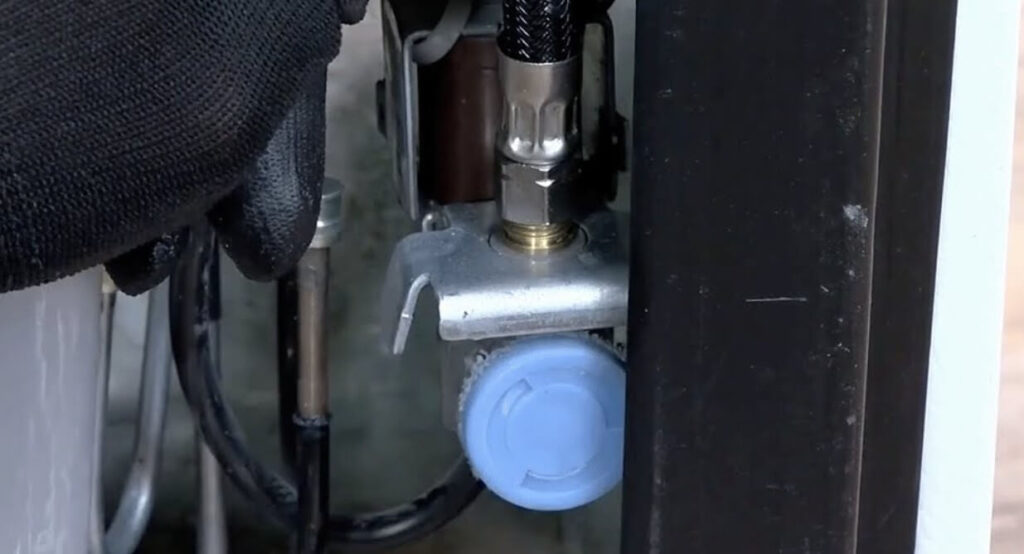
How Can I Speed Up My Refrigerator Water?
One way to speed up the flow of water from your refrigerator is by replacing the water filter. The old filter can become clogged over time, reducing the pressure and flow of water. It’s important to replace it every six months or as suggested by your manufacturer’s instructions in order to ensure maximum performance.
Additionally, you may want to check for any kinks in the line that could be restricting the flow of water and remove them if possible.
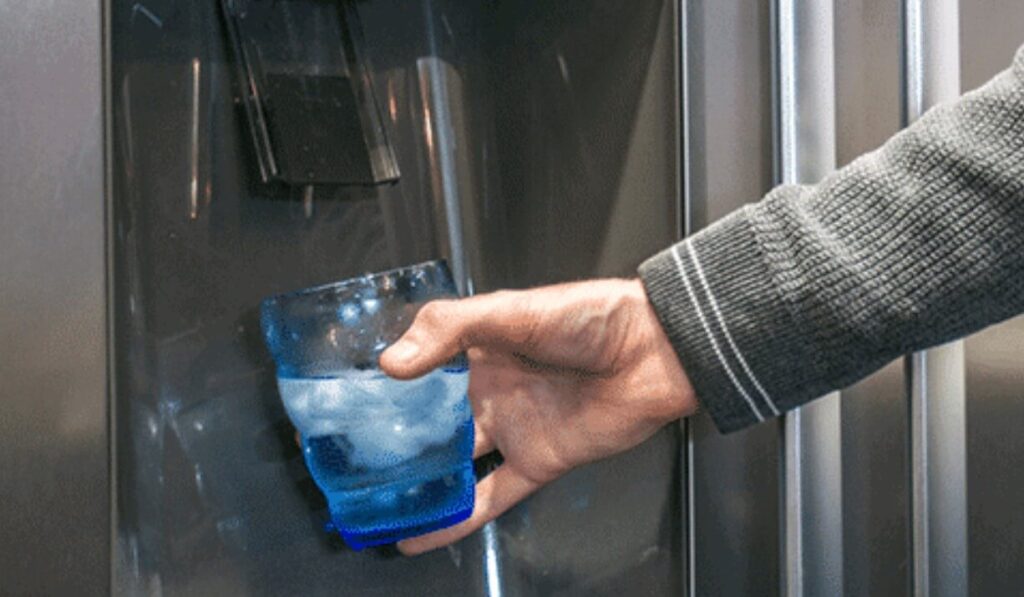
How Do You Fix a Slow Water Flow on a Refrigerator?
If your refrigerator’s water flow is slow, the most likely cause of this issue is a blocked filter. To fix the problem, you’ll need to replace the old filter with a new one and clean out any debris or buildup from inside the water line. Make sure that all connections between components are secure, and check for any clogs in the line itself.
If cleaning does not resolve your issue, try replacing other components such as valves or regulators that may be causing issues with the water pressure.
Why is the Water Dispenser on My Fridge So Slow?
The water dispenser on your fridge may be running slow due to a few different issues. One of the most common causes is a clogged filter, which reduces water flow and pressure.
Other possible reasons for sluggish performance include low water pressure in the house’s plumbing system, worn-out seals or valves inside the unit that are not allowing enough water through, or too much sediment buildup inside the tank.
To determine why your fridge’s water dispenser is running so slowly, it would be wise to check each of these potential culprits and make any necessary repairs or replacements.
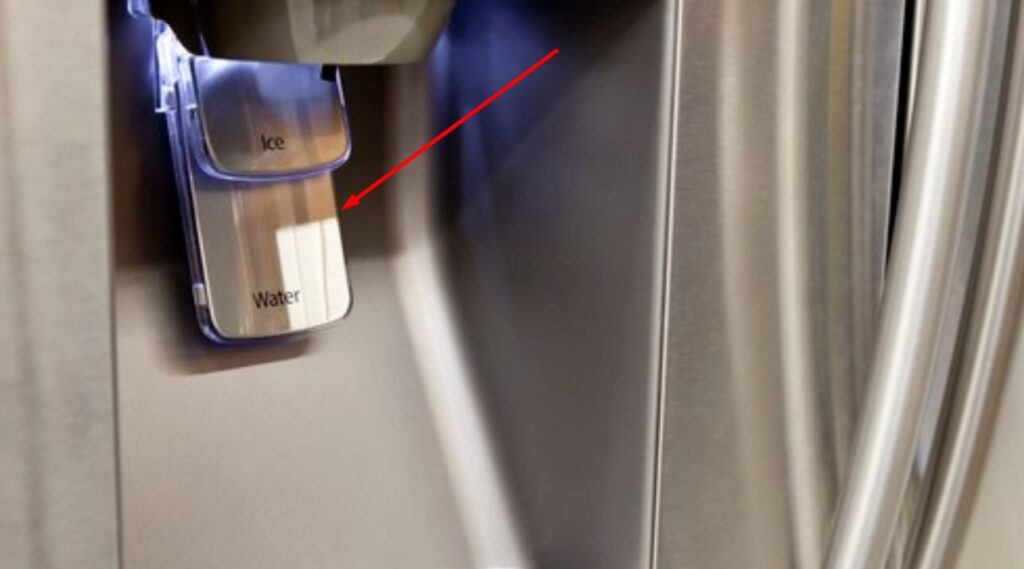
Conclusion
This blog post has provided a comprehensive guide to increasing water flow in your Whirlpool refrigerator. It is important to check the pressure valve and replace it if necessary, as well as clean out any clogged lines or filters that may be blocking the water flow.
Additionally, checking for kinks in the line and making sure that nothing is obstructing the fan can help ensure proper water flow.
With these tips in mind, you should now have a better understanding of how to increase the amount of water coming from your Whirlpool refrigerator.
